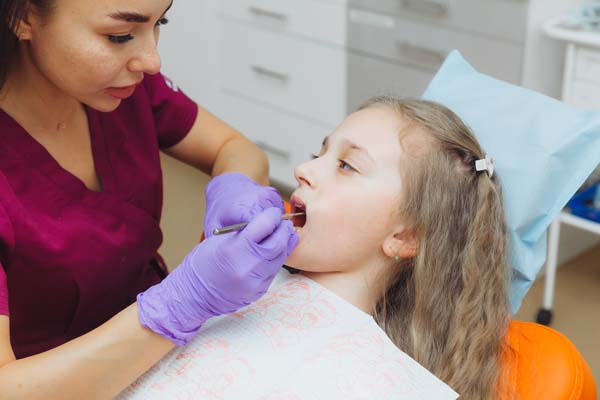What Parents Should Know About Pediatric Cavity Treatment

Pediatric cavity treatment is a way to ensure that teeth do not fall out prematurely due to cavities and subsequently cause oral development concerns, speech development concerns, or excessive pain. In this review, we discuss everything that parents should know about pediatric cavity treatment so they can make informed and educated decisions about their child’s dental care needs.
A parent’s guide to pediatric cavity treatment
The fact is that children are often highly vulnerable to cavities in their primary teeth. Parents need to be able to correctly identify cavities when they develop and understand the importance of prompt care. Here, we discuss all the general information that parents need about pediatric cavities and treatment options.
What is pediatric cavity treatment?
Pediatric cavity treatment is exactly how it sounds: a form of dental treatment to fill one or more cavities. Specifically, a cavity, also called a dental cary, is a hole that forms on a tooth due to acidic attacks caused by bacteria and food particles like sugar. For the most part, treating a dental cavity for a child is the same as it is for adults. However, the treatment options and processes may vary slightly. Here are the most common ways that a pediatric dentist can treat cavities:
- Pediatric fillings
- Baby root canals
- Dental crowns
- Tooth extraction
The recommended form of treatment depends on the location and severity of the cavity. The age of the child may also play a role. For instance, if the child’s primary tooth is already loose and ready to fall out, it may be best to extract the tooth if it has a cavity. However, in most cases, pediatric fillings are the best way to treat mild to moderate pediatric cavities.
Why is pediatric cavity treatment important?
Pediatric cavity treatment is vital to ensure proper oral development for the child. The early loss of primary teeth can cause a range of issues, notably, the improper growth of permanent teeth. This can lead to more orthodontic concerns and increase the likelihood that (and the extent to which) orthodontic treatment is necessary. Additionally, the early loss of teeth due to cavities can hinder the child’s speech development.
A cavity can be incredibly painful for a child if it is not treated. For these reasons, having cavities properly addressed in a timely manner is strongly recommended.
What are the signs of a pediatric cavity?
It is essential to identify the signs of a pediatric cavity and schedule a visit with a licensed pediatric dentist if any are detected. The most notable signs of a cavity are:
- Tooth discoloration
- Tooth sensitivity
- Toothache
- Visible hole on tooth
Some cavities are easier to detect than others. For instance, a cavity on the visible surface of a front tooth is easy to notice. On the other hand, a cavity on the backside of a molar may be harder to detect and is more likely to go unnoticed.
What is the treatment process for pediatric cavities?
The treatment process may look different for each patient. Ultimately, it depends on the number of cavities, the location of the cavities, and the type of treatment used. Here is a general breakdown of the treatment process for the most common types of pediatric cavity treatments:
- Pediatric filling: This involves cleaning and disinfecting the cavity. The filling material is then applied and hardened. There are different types of fillings, including amalgam, composite ceramic, and glass ionomer.
- Baby root canal: This is a root canal procedure for a baby tooth. This is necessary when the cavity is deep and reaches the root of the tooth. For this procedure, the dentist cleans deep inside the tooth and fills the cavity with a material known as gutta-percha before sealing the tooth and placing a crown.
- Dental crown: A dental crown may be placed on a baby tooth to cover a cavity. This may be placed after a baby root canal or to protect a tooth with only a small cavity.
- Tooth extraction: If necessary, tooth extraction may be recommended if the baby tooth is likely to fall out soon.
Does your child have a cavity? Contact us today
Our pediatric dentistry offers pediatric cavity treatment and helps ensure a painless process for your child. Our office is kid friendly and designed to allow children to have a good experience and develop healthy habits regarding visiting the dentist. For dental cavity treatment, contact us and schedule a visit today.
Request an appointment here: https://www.hvkidsmiles.com or call Hudson Valley Pediatric Dentistry at (845) 363-4177 for an appointment in our Middletown office.
Check out what others are saying about our services on Yelp: Read our Yelp reviews.
Recent Posts
Dental sealants safeguard the teeth against tooth decay by forming a barrier between bacterial plaque and the tooth enamel. The many tiny grooves on the surfaces of the back teeth may catch food particles. Since routine brushing cannot entirely remove them, they often stay there for an extended period. Cavities develop as a result of…
If a cavity develops and worsens, it could lead to the risk of a dental emergency due to an infection or severe discomfort. Dental sealants significantly reduce the risk of a dental emergency by helping to prevent cavities in vulnerable areas of teeth. Read on to learn how dental sealants can prevent a dental emergency…
Pediatric dentistry is a field of dental care that helps foster healthy oral habits in children and adolescents that can last a lifetime. By introducing young patients to regular dental care early on, these dental professionals and the patient's parents can set the foundation for strong, healthy teeth and gums. Here are five ways pediatric…
Cavity treatment for kids is important to keeping their teeth healthy and their smiles growing strong. Cavities are one of the most common dental problems in children, but they can be treated and prevented with proper care. Parents can help their children maintain healthy teeth and avoid future dental issues by understanding how to treat…


